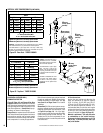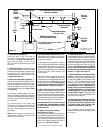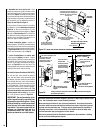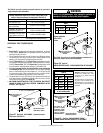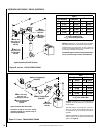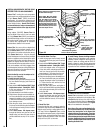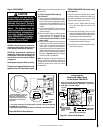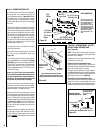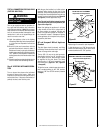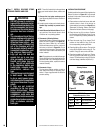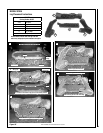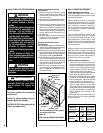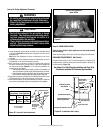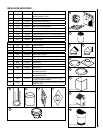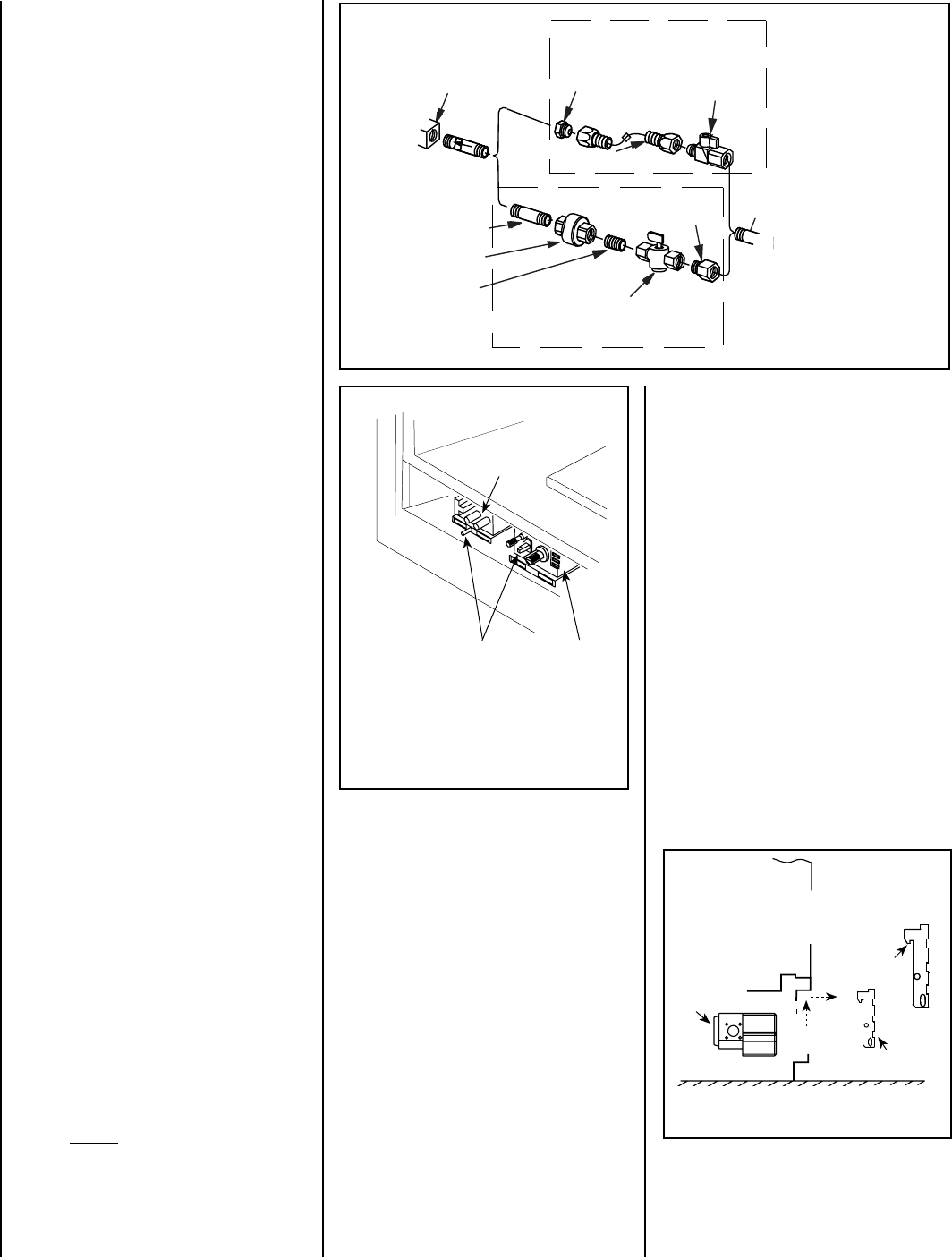
NOTE: DIAGRAMS & ILLUSTRATIONS ARE NOT TO SCALE.
26
Figure 50
OPENING CONTROL
COMPARTMENT DOOR
Control Valve
Lower Control
Compartment Door
Lift the Lower Control
Compartment Door
up and pull out to
remove.
Up
Out
Hook Catch
Figure 49
Sit and Honeywell Millivolt Gas Valve
Showing Piezo Igniter Location (Each Unit is
Equipped with Only One of these Gas Valves)
SIT Gas Valve
Shown with control
compartment door
removed
Piezo Igniter
Honeywell
Gas Valve
CONTROL COMPARTMENT ACCESS /
LOUVER PANEL INSTRUCTIONS
(Ref. Figure 50)
NOTE: The top louvered panel and the bottom
louvered control panel door remove and install
the same way as follows:
The gas controls can be found behind the control
compartment access door.
Removing Control Compartment Door:
Open the door by gently lifting it upward until
the hook catches on both sides clear the locating
slots. Then pull door out to remove.
On these millivolt systems, the piezo igniter,
HI/LO flame adjustment knob, and pilot and main
gas OFF/ON control knob are located below the
glass panel enclosure. See Figure 50.
Reinstalling Control Compartment Door:
To reinstall, insert the hook catches on each side
of the door into the corresponding slots in the
control compartment opening, then gently push
forward and slide down until it locks in place.
Gas
Valve
3/8" NPT x
Flare Fitting
3/8" Flex Tubing
3/8" Nipple
3/8" Union
3/8" Close
Nipple
3/8" Shut-off Valve
1/2" x 3/8"
Reducer
Gas
Stub
1/2" x 3/8" Flare
Shut-off Valve
Gas Solid Line Connector
Gas Flex Line Connector
*Sediment
Trap
3"
Min
Note: The gas supply line
must be installed in accor-
dance with building codes
by a qualified installer
approved and/or licensed
as required by the locality.
In the Commonwealth of
Massachusetts, installation
must be performed by a
licensed plumber or gas
fitter.
Figure 48
GAS CONNECTION
Step 5. CONNECTING GAS LINE
All codes require a shut-off valve mounted in
the supply line. The orientation of the shut-off
valve should face the front. Figure 48 illustrates
two methods for connecting the gas supply.
A Sediment Trap is recommended to prevent
moisture and debris in gas line from damaging
the valve.
The flex-line method is acceptable in the U.S.A.
where local codes permit, however, Canadian
requirements vary depending on locality. Instal-
lation must be in compliance with local codes.
These appliances are equipped with a gas flex-
line for use in connecting the unit to the gas
line. See Figure 48 for flex-line description.
The flex-line is rated for both natural gas and
propane gas. A manual shut off valve is also
provided with the flex-line.
The gas control valve is located in the lower
control compartment.
Access the valve compartment by removing
the lower control compartment panel (see
Figure 49).
The incoming gas line should be piped into the
valve compartment and connected (see Figures
48 and 49). The millivolt control valve has a 3/8"
(10 mm) NPT thread inlet port. The electronic
control valve has a 1/2" (13 mm) NPT thread
inlet port and is fitted with a 1/2" x 3/8" (13 mm x
10 mm) NPT fitting.
Secure all joints tightly using appropriate
tools and sealing compounds (ensure propane
resistant compounds are used in propane ap-
plications). It is recommended to seal around
the gas line to prevent cold air leakage.
Gas line connection may be performed largely
outside of the confines of the control compart-
ment and without having to enter the firebox
behind the glass. Proceed as follows:
Acquire the shut-off valve and gas lex line and
pull the assembly forward out of the compart-
ment. Separate the shut-off valve from the gas
flex-line. Determine the length of pipe needed
to route the gas line from the last fitting (shown
in Figure 14 on Page 11) to a point within the
control compartment that will allow the shut-
off valve to be easily attached by hand to the
gas flex-line.
Using pipe-dressing materials appropriate for
the gas type, securely affix the shut-off valve
to this determined pipe length at a convenient
location outside of the appliance lower control
compartment.



